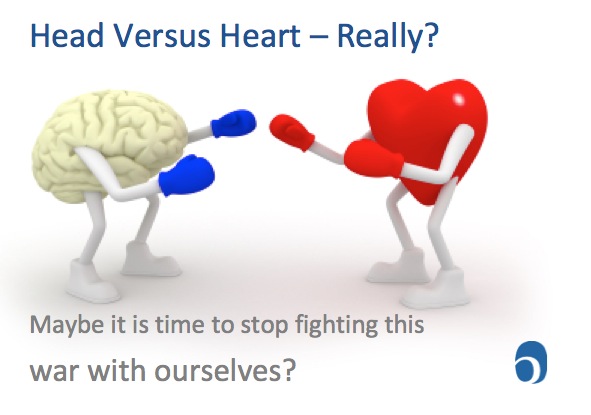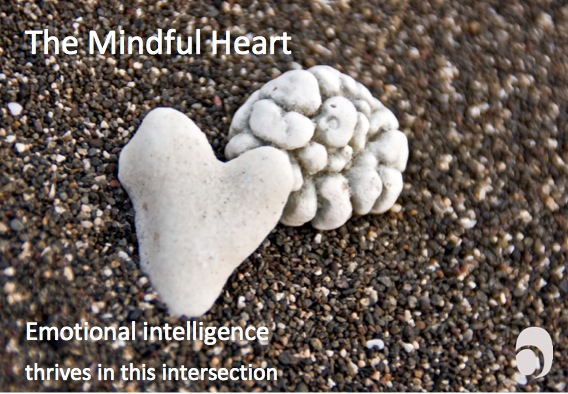
One of the central challenges of teaching emotional intelligence is a longstanding, deep cultural bias of “head versus heart.” The profound work of neuroscientist Antonio Damasio highlighted this when he titled a book, “Descartes Error.” Remember that Descartes famously said, “I think, therefore I am.” Damasio’s research on people with brain damage found that actually, thought alone doesn’t create conscious identity. The ability to say, “I am” comes from the intersection of several parts of the brain, including the emotional centers. Without emotion, we exist, but we are not fully alive.
Today, the idea of “mindfulness” has become gratifyingly popular. According to the Western mindfulness pioneer Jon Kabat Zinn, “mindfulness is the awareness that arises through paying attention on purpose in the present moment — non-judgmentally” (read more in this TIME interview with Zinn about mindfulness and health). This is a profoundly important idea, and closely aligned with the pursuit of “Know Yourself” in the Six Seconds Model. Yet when we practice this process, we’re not just practicing an awareness of logical mind, we’re seeking a profound opening to our whole mind. The mind that encompasses more than cognitive thought. So I’ve often thought we should consider “heartfulness” as well as “mindfulness.”
Emotional intelligence is being smart with feelings. Thus it is in this interaction of “head and heart” where emotional intelligence thrives. We often define emotional intelligence as blending emotion and cognition to make optimal decisions. Bringing together these two aspects of insight. Breaking the paradigm of head vs. heart to re-integrate wisdom Our friends at HeartMath have framed this intersection in the name of their organization. When you “do the math” of HeartMath, you a blending emotion and cognition.
to make optimal decisions. Bringing together these two aspects of insight. Breaking the paradigm of head vs. heart to re-integrate wisdom Our friends at HeartMath have framed this intersection in the name of their organization. When you “do the math” of HeartMath, you a blending emotion and cognition.
This week Arati Suryawanshi, one of our active network members, a psychologist and educator in India, and I were corresponding about the upcoming eWeek (the virtual festival of emotions – March 18-24). Arati was considering how to write about the blending of authentic language of the heart with the practices of mindfulness that are integral to Indian spiritual culture. I would like to consider an way to look at this blend as: “The Mindful Heart.”
What would it mean for you to have a mindful heart?
Can you think of the beating of your heart and the millions of molecules of emotion coursing through your blood to affect every cell of your body?
Can you feel the whirling storm of your mind?
What happens when you actively practice – consciously, patiently, non-judgmentally — bringing these two forces together?
And, as teachers, friends and leaders, why does it matter? What happens when we reconcile these forces and stop being at war with ourselves? I have often heard Bob Ingram, another of our wonderful EQ Network members and Basic Course Team Leader at the Army Management Staff College, say, “Leadership is a lifelong journey of just 12 inches – the distance from head to heart.”
